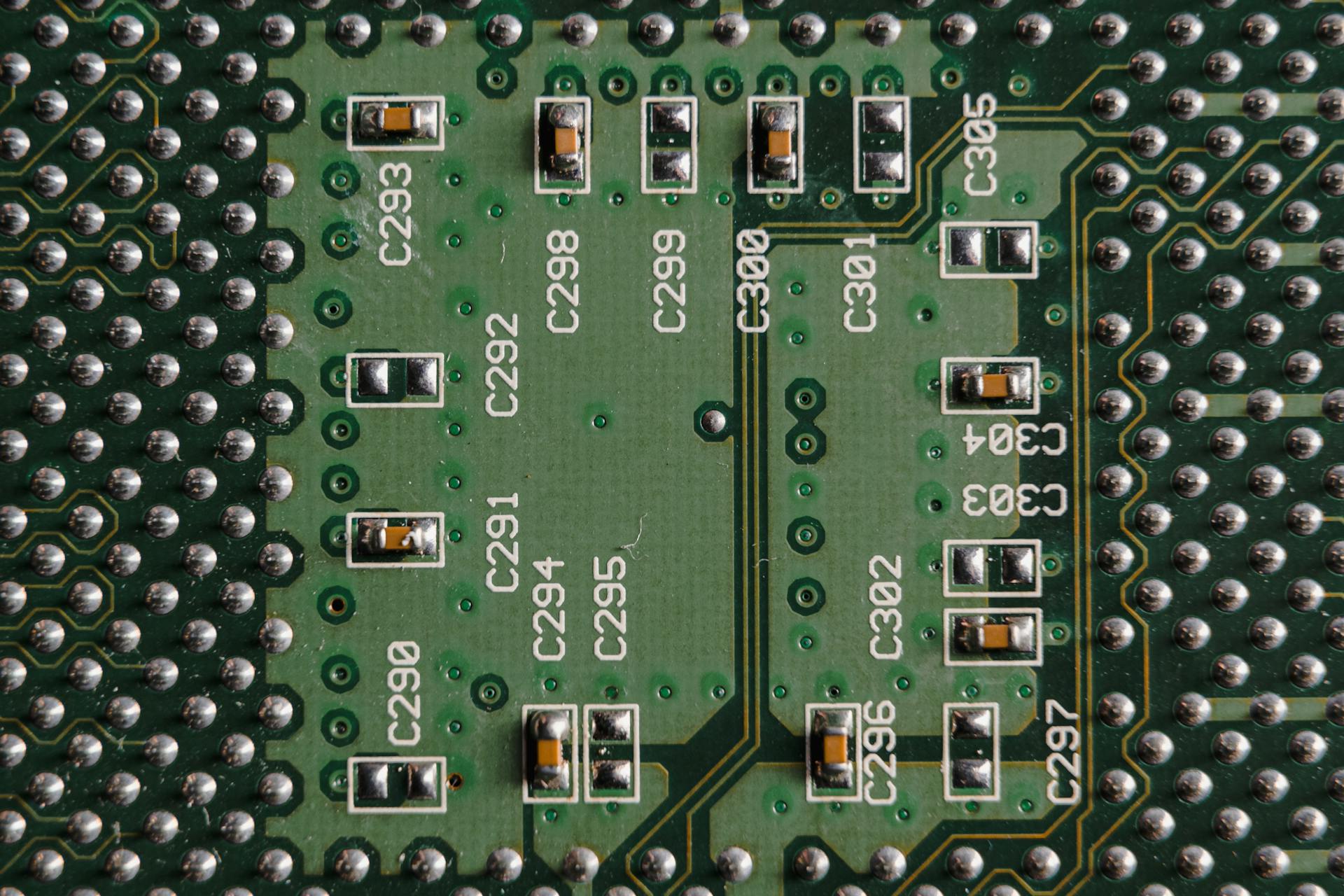
The credit assignment problem in machine learning is a fundamental challenge that arises when trying to optimize the performance of complex systems. This problem occurs because it's often unclear which actions or decisions led to a particular outcome.
In other words, the system doesn't know how to assign credit to the right actions or decisions that contributed to the outcome. This is a major issue because it makes it difficult to learn from experience and improve performance over time.
The credit assignment problem is particularly challenging in deep learning models, where the relationships between inputs and outputs are complex and difficult to understand. As a result, these models often require large amounts of data and computational resources to train effectively.
To illustrate this point, consider a simple example of a robot learning to navigate a maze. The robot might take multiple actions, such as turning left and right, to reach the goal, but it's unclear which action was most responsible for the outcome.
A fresh viewpoint: Automated Decision-making
The Credit Assignment Problem
The Credit Assignment Problem is a fundamental challenge in machine learning and artificial intelligence. It refers to the difficulty of determining which actions or decisions led to a particular outcome.
This problem arises because the output of a complex system, such as a neural network, is the result of many interconnected components working together. The output is not directly related to any single input or decision.
To illustrate this, consider a neural network trying to learn how to play a game like chess. The network is presented with a board position and must decide which move to make. However, the outcome of the game depends on many factors, including the network's previous moves and the opponent's responses.
The network must somehow figure out which of its many possible moves was responsible for the outcome. This is a daunting task, especially in complex systems with many interacting components.
If this caught your attention, see: Hidden Layers in Neural Networks Code Examples Tensorflow
Model-Free Learning
Model-free learning is often thought to be a way to avoid using models, but it's not entirely free from assumptions. In fact, it typically relies on simulable environments, where you can estimate the quality of a policy by running it many times, and use algorithms such as policy-gradient to learn.
This approach is called "model-free" because the learning part of the algorithm doesn't try to predict the consequences of actions, but it's not entirely model-free because it assumes a good model of the environment. Moreover, model-free learning typically works by splitting up tasks into episodes, which is a strong assumption that an animal learning about an environment can't separate its experience into episodes that aren't related to each other.
To get gradients in model-free learning, you need to obtain feedback, but this feedback doesn't tell you how to adjust your behavior based on the feedback received. You have to get gradients from a source that already has gradients, which is why learning to act online doesn't have this, because it lacks counterfactuals.
Online Search Challenges
Online learning is a tricky beast, where you're constantly producing outputs and getting feedback, but you don't know how to connect the dots between them.
In online learning, you're repeatedly producing outputs while getting feedback, but you don't know how to associate particular actions with particular rewards, which can be frustrating.
The problem is, online learning lacks a clear fitness function, making it hard to evaluate progress and adjust your approach.
Backprop is a computationally efficient way to do hillclimbing search, but it relies on having a fitness function, which isn't always available in online learning.
Q-learning and other reinforcement learning techniques provide a way to define a fitness function for online problems, making it possible to learn and adapt.
Models to the Rescue
Models can be incredibly helpful in understanding and adapting to feedback signals. A company might get overall profit feedback, but breaking it down into specific issues like low sales versus high production costs can be a game-changer.
In the example of a corporation, a detailed understanding of what drives profit figures is crucial. This includes knowing which product-quality issues need improvement if poor quality is impacting sales.
A model can help interpret feedback signals and match them to specific aspects of a strategy. This allows for more effective adaptation and improvement.
One of the assumptions of Q-learning is that the state is fully observable. However, models can reduce the strength of this assumption by providing a more nuanced understanding of the situation.
Let's take a look at the types of models that can be used:
- Logical induction models
- InfraBayes models
- Computable models (like AIXI)
These models can help us learn and adapt without making too many assumptions. But what if we could learn without models at all?
Additional reading: Learn to Rank Models
Model-Free Learning
Model-free learning requires a simulable environment, where you can estimate the quality of a policy by running it many times. This is often done using algorithms such as policy-gradient.
However, model-free learning is not as effective in real-world environments, where tasks can't be easily divided into episodes. The policy gradient theorem can mitigate some limitations, but it comes with a cost of an ergodicity assumption and noisier gradient estimates.
In model-free learning, updates or gradients are hard to come by, unlike in predictive learning where you can move towards what's observed. To learn to act, you need to get gradients from a source that already has gradients.
Broaden your view: Proximal Gradient Methods for Learning
Actor-critic learning is one approach that doesn't require everything to be episodic. It works by learning to estimate the expected value, not just the next reward, and using the current estimated expected value to give feedback to learn a policy.
However, even actor-critic learning has a "model" flavor, as the critic is learning to predict the expected value. This highlights the importance of models in associating rewards with actions.
In some cases, models can even help us ignore feedback or identify external factors that affect sales. This is especially true when we have a good understanding of the production line and its impact on product quality or production expenses.
One way to reduce the strengths of our assumptions is to look at increasingly rich model classes. However, even using logical induction or InfraBayes may not be enough, and we may still need to rely on models to some extent.
Temporal Problem
The temporal problem is a significant challenge in credit assignment. It arises because the feedback received by the agent is not always immediately related to the action taken.
In the context of temporal difference learning, the temporal problem is particularly acute because the agent learns from the differences between the predicted and actual rewards, but these differences can occur at different times.
The temporal problem can be thought of as a kind of "credit assignment delay" – the agent receives feedback, but it's not clear which action caused the outcome.
This delay can make it difficult for the agent to learn from its experiences, because it's not clear which actions were responsible for the rewards or penalties it receives.
Temporal Problem Solutions
Temporal problems are a type of credit assignment problem, where the goal is to assign credit or blame to past actions that led to a current outcome.
One way to solve temporal problems is to use a technique called temporal difference learning, which updates the value function based on the difference between the predicted and actual rewards.
This approach is useful for problems with delayed rewards, where the outcome of an action is not immediately known.
A fresh viewpoint: Ai Credit Repair Software
Temporal difference learning can be implemented using the following formula: ΔV(s) = α[r + γV(s') - V(s)], where ΔV(s) is the update to the value function, α is the learning rate, r is the reward, γ is the discount factor, V(s) is the current value function, and V(s') is the value function after taking the action.
In practice, temporal difference learning has been successfully applied to problems such as predicting stock prices and playing video games.
The key to successful temporal difference learning is choosing the right learning rate and discount factor, which can significantly impact the convergence of the algorithm.
For your interest: R Confusion Matrix
PFC and Contingent Learning
The prefrontal cortex (PFC) plays a crucial role in contingent learning, which is the ability to learn from the consequences of our actions.
In contingent learning, the PFC helps to evaluate the outcome of our actions and adjust our behavior accordingly.
The PFC is particularly active in situations where the consequences of our actions are uncertain or unpredictable.
This is why the PFC is often referred to as the "learning hub" of the brain.
Contingent learning is essential for tasks that require problem-solving, decision-making, and planning, such as learning to drive a car or ride a bike.
The PFC helps to filter out irrelevant information and focus on the most important aspects of the task at hand.
By doing so, the PFC enables us to learn more efficiently and effectively, even in complex and dynamic environments.
Sources
- https://ai.stackexchange.com/questions/12908/what-is-the-credit-assignment-problem
- https://stats.stackexchange.com/questions/421741/what-is-the-credit-assignment-problem-in-machine-learning-and-deep-learning
- https://www.alignmentforum.org/posts/Ajcq9xWi2fmgn8RBJ/the-credit-assignment-problem
- https://www.frontiersin.org/journals/neuroscience/articles/10.3389/fnins.2018.00182/full
- https://pubmed.ncbi.nlm.nih.gov/29636659/
Featured Images: pexels.com


